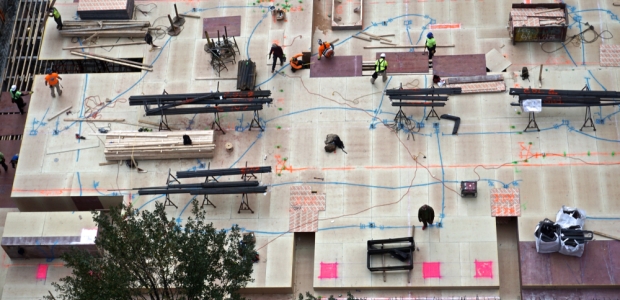
Report Finds Construction Fatalities Continue to Increase in New York State
In the "Deadly Skyline: An Annual Report on Construction Fatalities in New York State" report, researchers found that while New York State has seen an increase in fatalities related to construction, construction fatality rates in New York City construction continue to decrease.
New York's construction industry continues to be "highly dangerous" for workers, according to the New York Committee for Occupational Safety and Health's latest construction fatality report, released Jan. 30. In the report, Deadly Skyline: An Annual Report on Construction Fatalities in New York State, researchers found that while New York State has seen an increase in fatalities related to construction, construction fatality rates in New York City construction continue to decrease.
According to the report, 69 construction workers died in New York State in 2017, the most recent data year available. The construction fatality rate for New York State has increased by 39 percent in the past five years.
In contrast, construction fatalities for New York City continued to decrease in 2017, with the rate trending downwards. In New York City, 20 construction workers died in 2017. The fatal occupational injury rate in construction in New York City has decreased by 23 percent over the past five years. According to NYCOSH, "this indicates that fluctuations in the number of construction projects in New York City does not correlate to the decreasing number of fatalities, as construction is booming yet fatalities are falling."
New York State had a 52 percent higher construction fatality rate than New York City in 2017, the report states. Fatal falls continue to be the top cause of construction work deaths in both New York City and New York State; in the past 10 years, 187 workers died in falls in New York State, accounting for 49 percent of all construction fatalities.
The report's other findings include that OSHA fines for construction fatality cases remain low, and non-union job sites are particularly dangerous for construction workers.
NYCOSH's report includes multiple recommendations to mitigate the risk of construction fatalities, including increasing the role of New York State in protecting construction worker safety and preserving New York's Scaffold Safety Law.
"In our new 'Deadly Skyline' report on construction fatalities in New York, we found that over the past five years, as construction deaths on the job have been mostly decreasing in New York City, they have been mostly increasing in New York State," said Charlene Obernauer, executive director of NYCOSH. "'Deadly Skyline' points to the need for New York State to proactively protect construction workers—particularly Latino and immigrant workers—with protective policies."